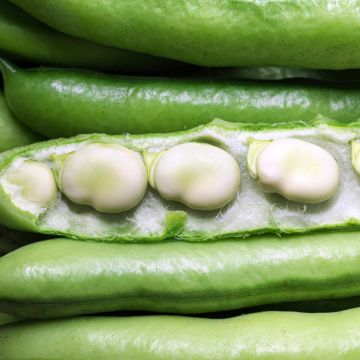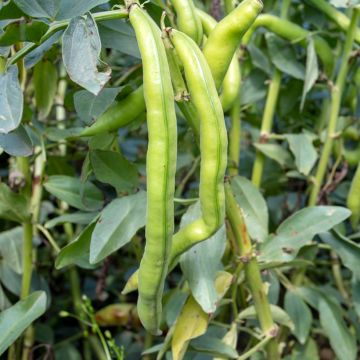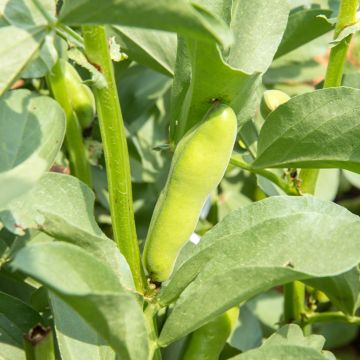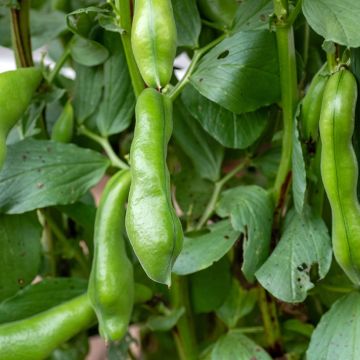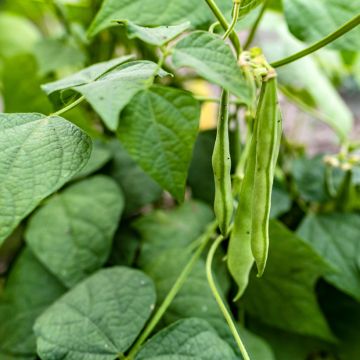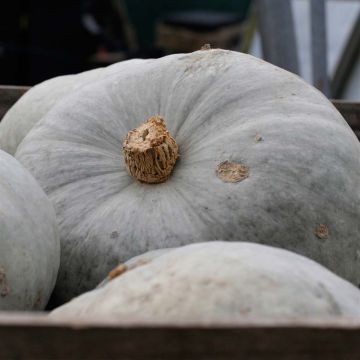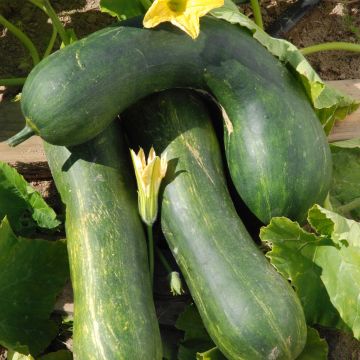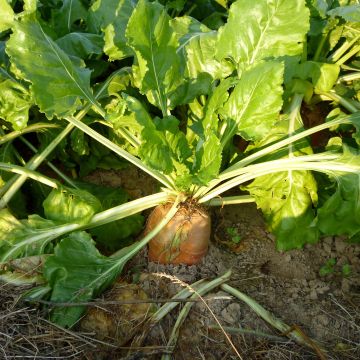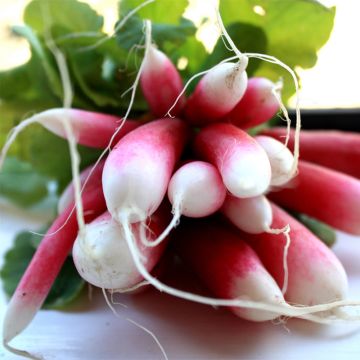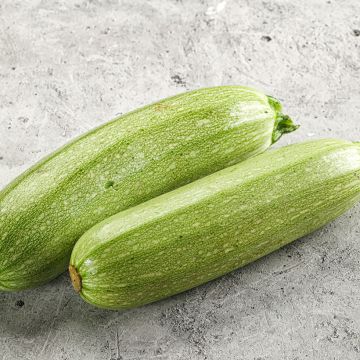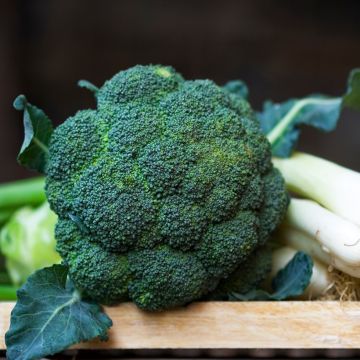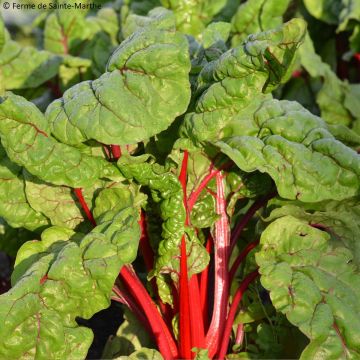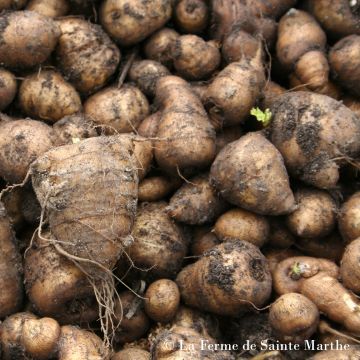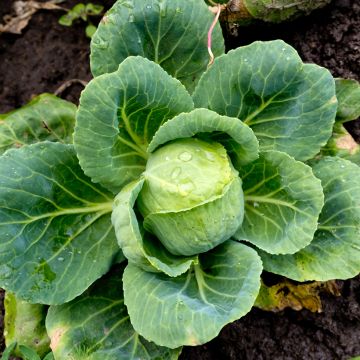

Broad bean Aguadulce - Ferme de Sainte Marthe seeds
Broad bean Aguadulce - Ferme de Sainte Marthe seeds
Vicia faba Aguadulce
Broad bean 'Aguadulce'
This item cannot be shipped to the selected country
Dispatch by letter from €3.90
More information
Schedule delivery date,
and select date in basket
This plant carries a 6 months recovery warranty
More information
We guarantee the quality of our plants for a full growing cycle, and will replace at our expense any plant that fails to recover under normal climatic and planting conditions.
Seed-only orders are dispatched by sealed envelope. The delivery charge for seed-only orders is €3.90.


Description
Vicia faba 'Aguadulce' is a vigorous, fast-growing, and highly productive variety. Its enormous pods can reach 40cm (16in) in length, and contain 8 to 9 large, tender and fleshy beans. This classic but excellent variety is sown from February to April, depending on the region.
The broad bean is a legume that belongs to the large Fabaceae family, like beans and peas. After falling slightly out of favour, it seems to be making a comeback in vegetable gardens. Its cultivation is easy.
Originally from Asia and the Middle East, it is widely cultivated worldwide, both for its flavour and its nutritional qualities. Rich in energy nutrients, it is considered a starchy food. There are many varieties of broad beans, with varying pod sizes and bean colours: some are white, others are brown.
It can be consumed both raw and cooked. However, it requires some effort, as fresh broad beans need to be shelled and then peeled, removing the second skin from each bean.
To enjoy them raw with a sprinkle of salt, like radishes, you should harvest them when they are young and tender (this will spare you the second peeling). Generally, 1kg of raw broad beans yields 250g of peeled beans.
Cultivating broad beans is easy. They will be happy in soil that is poor, clayey, and moist. Like all legumes, it is not demanding. It thrives in heavy and very moist soils. It is not very frost-sensitive and can be sown as early as February.
Harvest: harvesting simply involves picking pods at various stages of ripeness, depending on how you want to consume them: raw, cooked, or dried.
Storage: fresh broad beans can be stored for a few days in the vegetable compartment of your refrigerator. You can also dry them and store them at room temperature. Broad beans also freeze very well.
Gardener's tip: black aphids love broad beans. Colonies generally descend on an entire row of beans. To dislodge them without using insecticides, you can spray water mixed with black soap (2 tablespoons per litre). Having read that their presence could promote fruiting, we let them be. We soon noticed the presence of ladybirds. The harvest was quite satisfactory, even if, it must be admitted, the pods were black and rather sticky! In the end, we enjoyed our harvest, and we believe that there are now more ladybirds in the garden because there is not a single aphid on our nasturtiums.
Report an error about the product description
Harvest
Plant habit
Foliage
Botanical data
Vicia
faba
Aguadulce
Fabaceae
Broad bean 'Aguadulce'
Cultivar or hybrid
Annual
Other Broad bean seeds
Planting and care
Germination occurs at a minimum temperature of 8°C (46.4°F). It takes between 8 and 30 days for the seedlings to emerge.
Sow from October to the end of November in mild regions. Sow under cover everywhere else for a harvest from mid-May to the end of June. The sowing period extends from early February to the end of April for a harvest from mid-June to the end of August.
The young plants tolerate negative temperatures but cannot withstand several days at -5°C (23°F). If you sow in winter, or if the end of winter is icy, protect them under a small polytunnel.
Plant in the sun. Loosen the soil, rake it, and create furrows spaced 40 to 50cm (16 to 20in) apart, with a depth of 3 to 4cm (1 to 2in). Sow in rows, spacing the seeds 5cm (2in) apart and cover.
Cultivation
It is an undemanding vegetable that thrives in heavy, moist soil. It does not require any prior fertilisation and is sown in well-loosened soil.
During cultivation, it is wise to mound up the plants when they reach a height of 30cm (12in). This stimulates the formation of new roots and ensures better stability. At flowering, it is traditional to pinch the top of the plant to encourage the formation of pods and eliminate aphids, which tend to settle there first.
In windy regions, it is recommended to stake the plants (we do it a bit like with raspberry bushes) so that, laden with pods, they don't collapse at the first gust of wind.
As for companion planting, it is a good neighbour. It can fix nitrogen in the soil. It may increase the production of cabbage and lettuce. To keep aphids away, you can also sow basil and phacelia between the rows.
Seedlings
Care
Intended location
-
, onOrder confirmed
Reply from on Promesse de fleurs
Vegetable seeds
Haven't found what you were looking for?
Hardiness is the lowest winter temperature a plant can endure without suffering serious damage or even dying. However, hardiness is affected by location (a sheltered area, such as a patio), protection (winter cover) and soil type (hardiness is improved by well-drained soil).

Photo Sharing Terms & Conditions
In order to encourage gardeners to interact and share their experiences, Promesse de fleurs offers various media enabling content to be uploaded onto its Site - in particular via the ‘Photo sharing’ module.
The User agrees to refrain from:
- Posting any content that is illegal, prejudicial, insulting, racist, inciteful to hatred, revisionist, contrary to public decency, that infringes on privacy or on the privacy rights of third parties, in particular the publicity rights of persons and goods, intellectual property rights, or the right to privacy.
- Submitting content on behalf of a third party;
- Impersonate the identity of a third party and/or publish any personal information about a third party;
In general, the User undertakes to refrain from any unethical behaviour.
All Content (in particular text, comments, files, images, photos, videos, creative works, etc.), which may be subject to property or intellectual property rights, image or other private rights, shall remain the property of the User, subject to the limited rights granted by the terms of the licence granted by Promesse de fleurs as stated below. Users are at liberty to publish or not to publish such Content on the Site, notably via the ‘Photo Sharing’ facility, and accept that this Content shall be made public and freely accessible, notably on the Internet.
Users further acknowledge, undertake to have ,and guarantee that they hold all necessary rights and permissions to publish such material on the Site, in particular with regard to the legislation in force pertaining to any privacy, property, intellectual property, image, or contractual rights, or rights of any other nature. By publishing such Content on the Site, Users acknowledge accepting full liability as publishers of the Content within the meaning of the law, and grant Promesse de fleurs, free of charge, an inclusive, worldwide licence for the said Content for the entire duration of its publication, including all reproduction, representation, up/downloading, displaying, performing, transmission, and storage rights.
Users also grant permission for their name to be linked to the Content and accept that this link may not always be made available.
By engaging in posting material, Users consent to their Content becoming automatically accessible on the Internet, in particular on other sites and/or blogs and/or web pages of the Promesse de fleurs site, including in particular social pages and the Promesse de fleurs catalogue.
Users may secure the removal of entrusted content free of charge by issuing a simple request via our contact form.
The flowering period indicated on our website applies to countries and regions located in USDA zone 8 (France, the United Kingdom, Ireland, the Netherlands, etc.)
It will vary according to where you live:
- In zones 9 to 10 (Italy, Spain, Greece, etc.), flowering will occur about 2 to 4 weeks earlier.
- In zones 6 to 7 (Germany, Poland, Slovenia, and lower mountainous regions), flowering will be delayed by 2 to 3 weeks.
- In zone 5 (Central Europe, Scandinavia), blooming will be delayed by 3 to 5 weeks.
In temperate climates, pruning of spring-flowering shrubs (forsythia, spireas, etc.) should be done just after flowering.
Pruning of summer-flowering shrubs (Indian Lilac, Perovskia, etc.) can be done in winter or spring.
In cold regions as well as with frost-sensitive plants, avoid pruning too early when severe frosts may still occur.
The planting period indicated on our website applies to countries and regions located in USDA zone 8 (France, United Kingdom, Ireland, Netherlands).
It will vary according to where you live:
- In Mediterranean zones (Marseille, Madrid, Milan, etc.), autumn and winter are the best planting periods.
- In continental zones (Strasbourg, Munich, Vienna, etc.), delay planting by 2 to 3 weeks in spring and bring it forward by 2 to 4 weeks in autumn.
- In mountainous regions (the Alps, Pyrenees, Carpathians, etc.), it is best to plant in late spring (May-June) or late summer (August-September).
The harvesting period indicated on our website applies to countries and regions in USDA zone 8 (France, England, Ireland, the Netherlands).
In colder areas (Scandinavia, Poland, Austria...) fruit and vegetable harvests are likely to be delayed by 3-4 weeks.
In warmer areas (Italy, Spain, Greece, etc.), harvesting will probably take place earlier, depending on weather conditions.
The sowing periods indicated on our website apply to countries and regions within USDA Zone 8 (France, UK, Ireland, Netherlands).
In colder areas (Scandinavia, Poland, Austria...), delay any outdoor sowing by 3-4 weeks, or sow under glass.
In warmer climes (Italy, Spain, Greece, etc.), bring outdoor sowing forward by a few weeks.


































